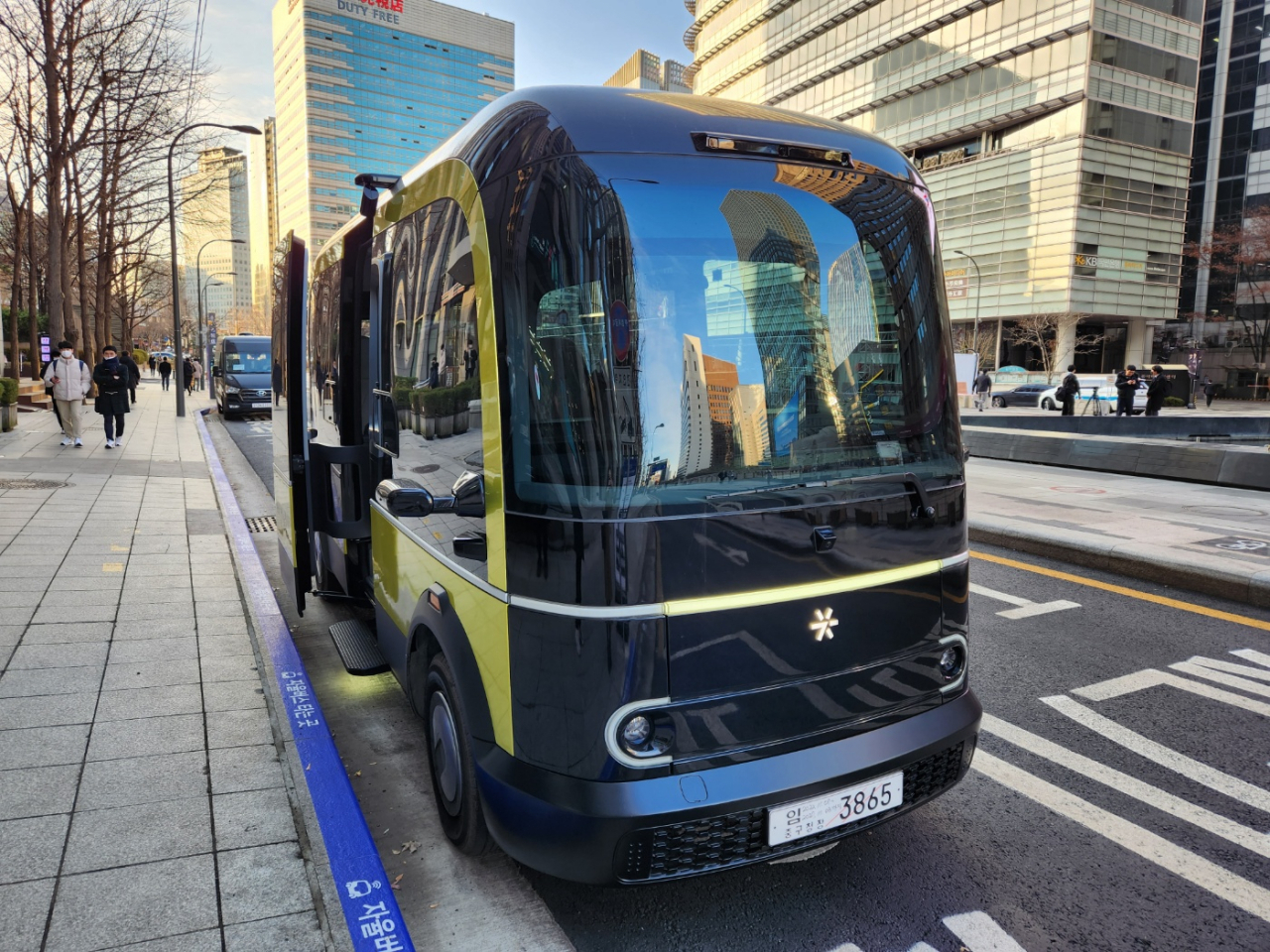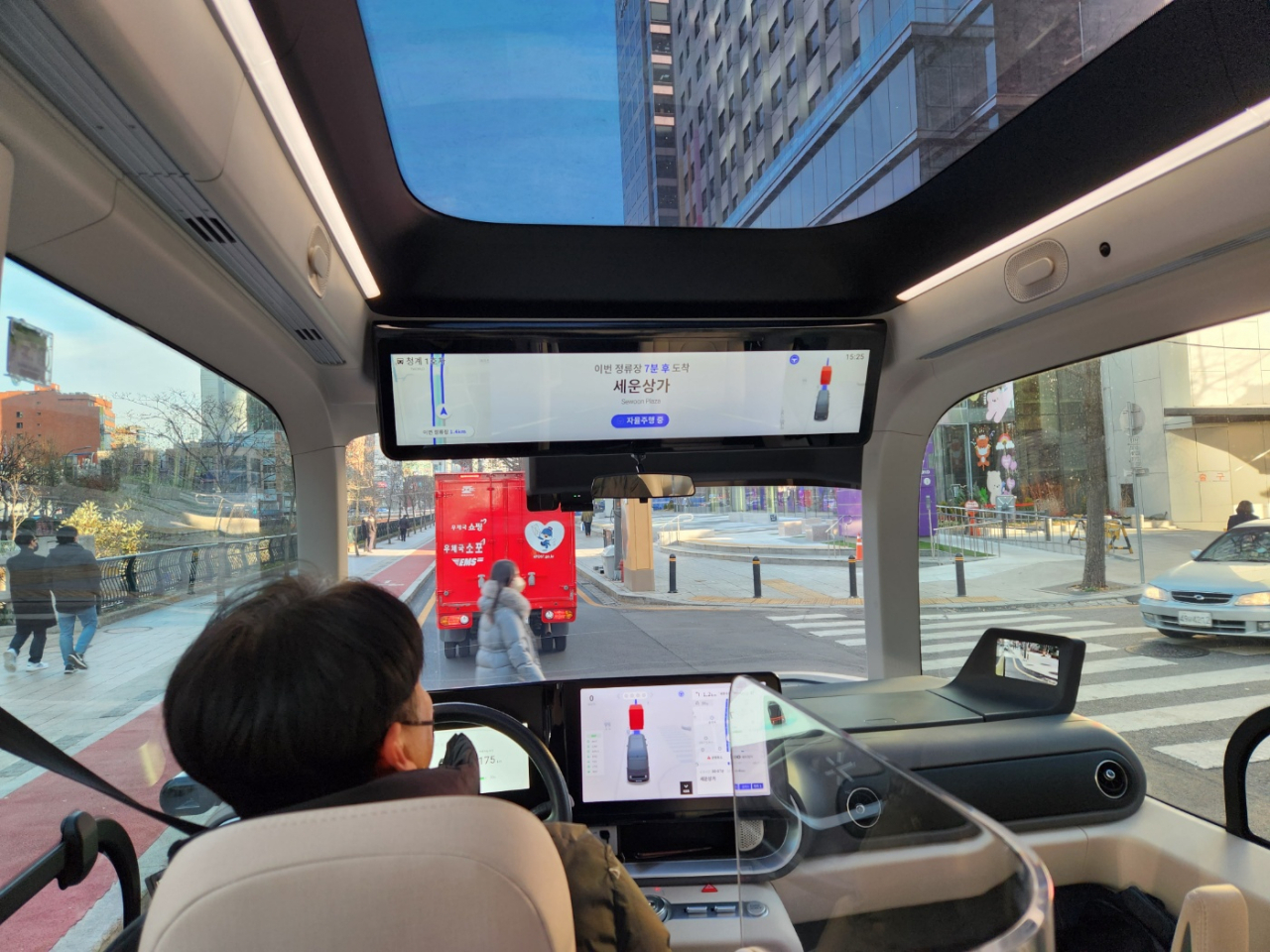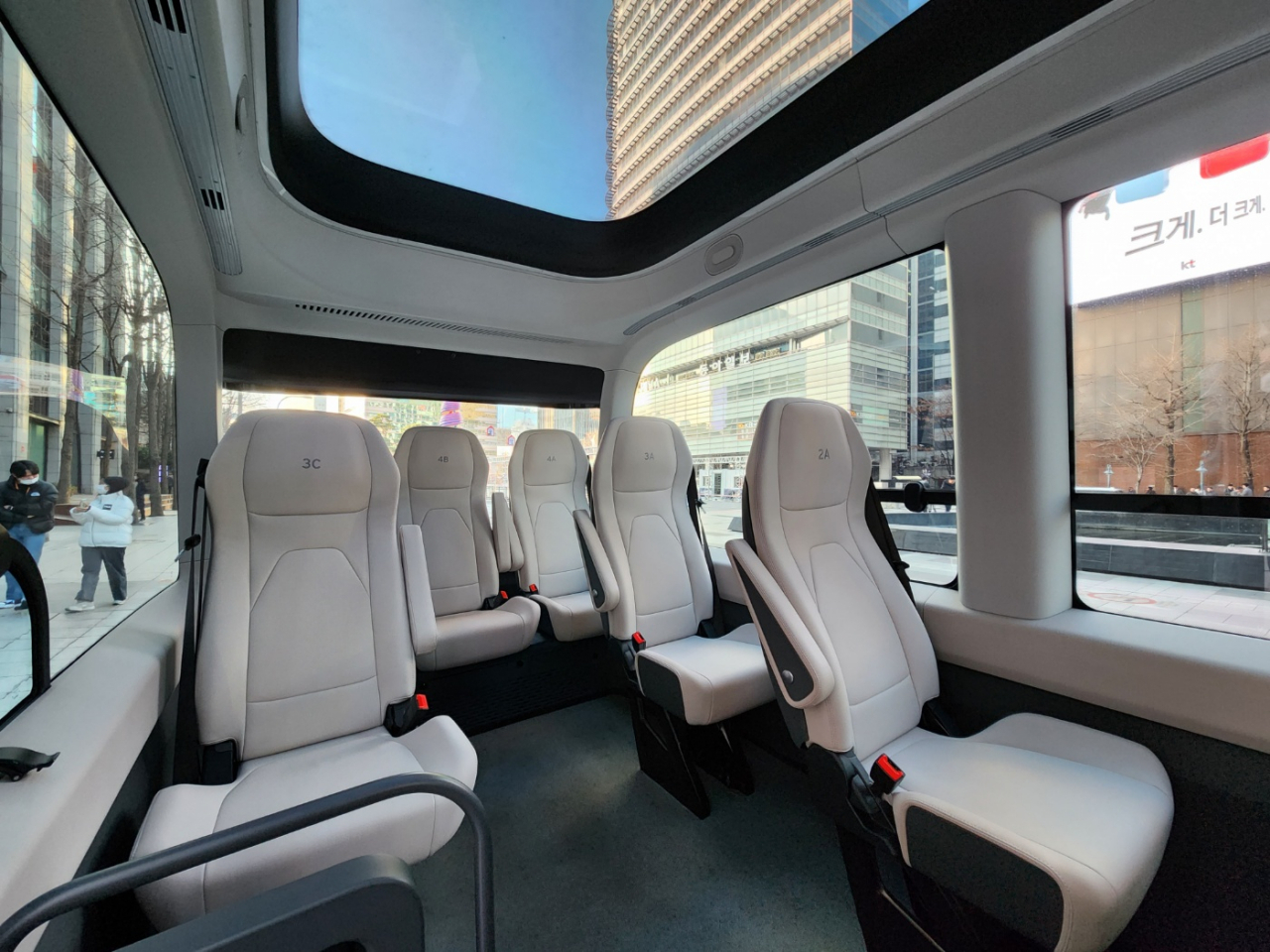Onboard Seoul’s first self-driving bus
Autonomous bus debuts in city center as Seoul charges ahead into future of public transportation
By Choi Jae-heePublished : Dec. 12, 2022 - 18:12

A slick and shiny mini bus moved smoothly toward the Cheonggye Plaza bus stop near Gwanghwamun Station, central Seoul. Four passengers, including this reporter, got on board.
The vehicle with seven passenger seats had an airy, open feel, with an impressive panoramic glass roof and full-size windows on four sides. There was someone sitting in the driver’s seat, but his hands never touched the steering wheel even as the bus started moving.
For much of the ride, which lasted 20 minutes or so, his hands stayed off the wheel.
Shutting between two stops Cheonggye Plaza and Sewoon Shopping Center on a 3.4-kilometer circular route, the self-driving vehicle is the future that Seoul, a city of millions of commuters, hopes to greet in coming years.
Self-driving buses
Currently, there are two self-driving buses roaming along the Cheonggye Stream, central Seoul, as part of a pilot project launched on Nov. 25 by 42dot, a local start-up owned by Hyundai Motor Group.
They run on an advanced driver assistance system which, utilizing real-time data compiled from 12 cameras and six radar sensors installed atop the vehicle, detects, classifies and recognizes objects, pedestrians, traffic lights and signs and others.
Its display panel resembles Tesla’s autopilot, with visual presentation of information on the route and road environments. Near a pedestrian, it slows down. When needed, it changes lanes.
The human bus driver took control only twice during the ride, when the bus was passing by construction sites near Sewoon Shopping Center and when it had to make a U-turn.


Among the passengers onboard were a curious mother-son duo.
“It is amazing to actually ride a self-driving car. I have only seen them on the news,” said the 36-year-old woman who only gave her surname Yoo.
“Looking at how the bus controls its speed by itself, I felt technology has advanced faster than expected.”
She added that for her seven-year child, self-driving public transportation may soon become nothing to be amazed about.
Future of transport
Since February, four driverless cars are offering public taxi services in the Sangam-dong district in western Seoul, taking passengers around the Digital Media City Station and nearby apartment and office buildings. A passenger can hail them via the app TAP! at the fixed fare of 2,000 won ($1.53) per ride.
This June saw a successful trial run of Hyundai Motor’s Level-4 autonomous car RoboRide on busy roads of Gangnam, southern Seoul. Level 4 means the car can operate almost independently with little intervention by a human driver. The test-run was jointly conducted by Hyundai, the Ministry of Land, Infrastructure and Transport and the city government.
Now the operation of self-driving buses is part of the city government's five-year plan to roll out autonomous vehicles across Seoul.
Buses run only on weekdays from 09:30 a.m. to 4:00 p.m. as Cheonggye Plaza becomes a car-free street on weekends. It is free of charge, but prior reservation is required.
The area around Cheonggye Stream, which cuts through the heart of Seoul, was chosen as a test bed for the nation’s first autonomous public transportation service for a reason.
“Cheonggye Stream attracts some 40 million visitors a year. With driverless buses running across the area, many Koreans can become familiar with the vehicles’ driving patterns, including how they react to jaywalkers. Both drivers and pedestrians can naturally learn about the new technology,” said Kim Jung-woo, a spokesperson for 42dot.
“The populous Cheonggye Stream is a perfect place for improving social acceptance of autonomous driving.”
Once the trial period ends and the safety in real traffic situations is ensured, the operator 42dot plans to start its commercial operation, the official added.
Another vehicle will be added to its fleet and the driving route will also be expanded to Gwangjang Market, a popular tourist spot among foreigners and locals. Talks are underway with the Seoul city government over the price of a bus ride.
With the electric-powered bus running at a slow speed of around 30 kilometers per hour and big windows on five sides including the sunroof, it indeed looks ideal for sightseeing.
How to book a ride
1. Book your seat via 42dot’s mobile app Tap! downloadable on the Google Play Store or Apple App Store.
2. Wait at the designated bus stop. Real-time location of the incoming bus is provided on the app.
3. You will be asked to show your reservation details before getting on the bus.
4. Every passenger must be seated for the bus to start moving. It is a nonstop ride to the destination.












![[Today’s K-pop] BTS pop-up event to come to Seoul](http://res.heraldm.com/phpwas/restmb_idxmake.php?idx=644&simg=/content/image/2024/04/17/20240417050734_0.jpg&u=)





![[KH Explains] Hyundai's full hybrid edge to pay off amid slow transition to pure EVs](http://res.heraldm.com/phpwas/restmb_idxmake.php?idx=652&simg=/content/image/2024/04/18/20240418050645_0.jpg&u=20240419100350)

![[Today’s K-pop] Zico drops snippet of collaboration with Jennie](http://res.heraldm.com/phpwas/restmb_idxmake.php?idx=642&simg=/content/image/2024/04/18/20240418050702_0.jpg&u=)